An end to the historic Cassilly & Cassilly studio on Lafayette?
A once iconic and eclectic space now faces an uncertain future
Welcome to another Unseen St. Louis. Today, I’m bringing you the tale of a building that for once is still standing (though barely). Like so many of our built history, this structure, with ties to Bob Cassilly, has a remarkable past and a very uncertain future. Read on to the end to learn what you can do to help save the building (or at least the external artwork) between now and the next Preservation Board meeting on Feb. 26th, 2024.
Update: The request to demolish the Cassilly & Cassilly studio has been removed from the Preservation Board agenda for Monday 2/26.
It’s possible the property owner is hoping to delay until no one is paying attention. but I will be watching.
Located at 2645 Lafayette Avenue, just west of Jefferson, is a distinctive building notable for its faux terracotta facade. Spanning an entire block, its exterior is adorned with striking features: concrete dragons perched above the doorways, intricate butterfly-designed fences, and a prominent, large concrete phallic statue. This building once served as the studio of Bob Cassilly, a renowned St. Louis sculptor and the founder of the City Museum. With his wife Gail, the duo, through their design company Cassilly & Cassilly, infused the space with their creative and unconventional spirit.
In addition to its use as an art studio, the building and the block on which it resides has a rich and surprising history that spans over a century and, at one point, involved the Mexican Revolution.
However, time has not been kind to the structure, and it faces imminent demolition unless the people of St. Louis step up and call for the structure—or, at the very least, the Cassilly facade—to be saved from the wrecking ball.
A brief history of 2645 Lafayette
For most of its existence, 2645 Lafayette wasn’t significant enough to earn historical references or photographs, so its history has been challenging to compile. Below is a list of tenants I pieced together based on references in local newspapers and a bit of help from City Hall.
The building that housed the Cassilly & Cassilly studio appears to date to 1895, according to the St. Louis City Assessors Office.
The timeline for the block:
1891-1895 Savignac’s Stable/Compton Hill Stable (previous construction on the site)
1895 - Current studio building constructed (per Assessors Office)
1926 - Koenig Motor Co.
1927 - Willy’s-Overland Inc. (auto dealer)
1930 - Hawthorne Cycle & Radio
1949-1966 Bettendorf Grocery (later Bettendorf-Rapp)
1983/84 - Bob & Gail Cassilly purchase the building from Pantheon Corp.
2015 - Cassilly estate sells property to SphereAxis Development Group for $185,000
Update 2/18/24: since I published this article yesterday, someone from the Missouri History Museum sent me an image of a Sanborn map from 1908 showing the buildings associated with the address at that time. As I was doing my initial research, there was little information to go on, so I worked on the assumption that the studio building was the only structure on the short block because it is bounded by two streets. It now appears there were other buildings adjacent to it, and after those structures were demolished, the address changed, causing additional confusion.
Catalyst of the Mexican Revolution
In the early 20th century, this site (or a neighboring building, as noted above) became an unlikely epicenter for revolutionary thought. (While this information may not add additional historical merit to the studio building, it is still a fascinating story, and I’m keeping it here.)
Mexican anarchists Ricardo and Enrique Flores Magón were early members of the Partido Liberal Mexicano (PLM, Mexican Liberal Party) in 1905. The Magóns and others began printing the journal Regeneración, a publication critical of the 30-year dictatorship of General Porfirio Díaz in Mexico. The ideas shared in the publication ultimately sparked the Mexican Revolution.
Initially, Regeneración was printed in Mexico, but as its content increasingly criticized the Díaz administration, the leaders were compelled to flee to the US, finding temporary refuge in San Antonio for eight months before moving to St. Louis. They were sheltered here by the Western Federation of Miners and the Industrial Workers of the World. Eventually, they landed at 2645 Lafayette, where the leaders lived, wrote, and set the type for the publication (although the actual printing occurred downtown). Regeneración, published bi-weekly, was widely circulated throughout Mexico and the Southwest US.
Washington University professor Sánchez Prado notes that through the publication, these men disseminated ideas that deeply resonated with the Mexican populace and inspired revolutionary leaders like Francisco Madero.
Ricardo Flores Magón’s words, published in Regeneración, were a clarion call for revolution:
"Forward, comrades! Soon you will hear the first shots; soon the shout of rebellion will thunder from the throats of the oppressed... Land and Liberty!"
These words, echoing from November 19, 1910, a day before the revolution's onset, originated not in Mexico but from right here in St. Louis.
Concerned, the Mexican government pressured US officials to act against the PLM and publishers of Regeneración and hired private detective Thomas Furlong (of the St. Louis-based Furlong Secret Service Company, a competitor of the Pinkertons) to pursue the Magón brothers. Eventually, most of the organizers were arrested here or elsewhere in the US or Mexico.
Although the new information suggests that the building located at 2645-55 Lafayette Ave. that housed Regeneración may have been a neighbor to the studio building, it still emphasizes the critical importance of preserving sites of historical significance.
Enter Bob Cassilly
Bob Cassilly, an American sculptor and entrepreneur, left an indelible mark on the world of art and creative spaces. Born in Webster Groves in 1949, Cassilly pursued his passion for art at Fontbonne University and the University of Missouri–St. Louis. He is fondly remembered for his extraordinary vision and ingenuity as the driving force behind the creation of City Museum in St. Louis and many other iconic public artworks here in town and around the country.

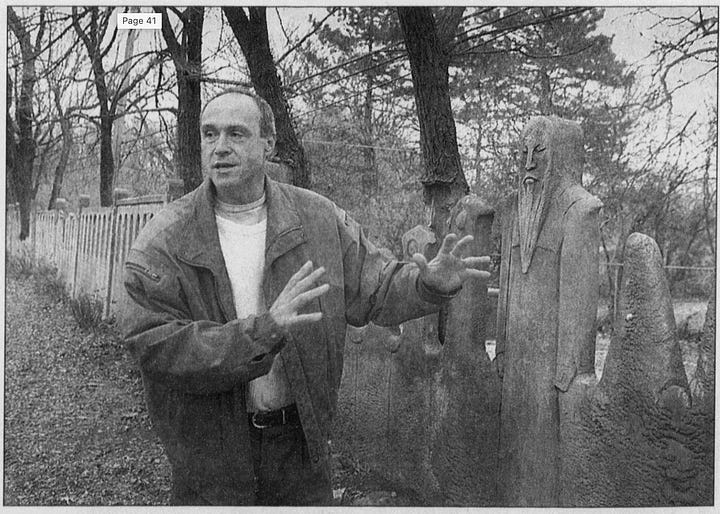
Beginning in the 1980s (well before they would start work on what would become City Museum), Bob and his second wife, artist Gail Soliwoda, did much of their work in the studio on Lafayette, which was by then a converted grocery store. Bob bought the building from Pantheon Corp. with the condition that he put a new storefront up within six months.
By 1991, Bob Cassilly had mounted his 24-foot-tall praying mantis to the studio roof, making it visible to drivers on I-44. (The same praying mantis today delights visitors to City Museum, where it holds court on the rooftop.)
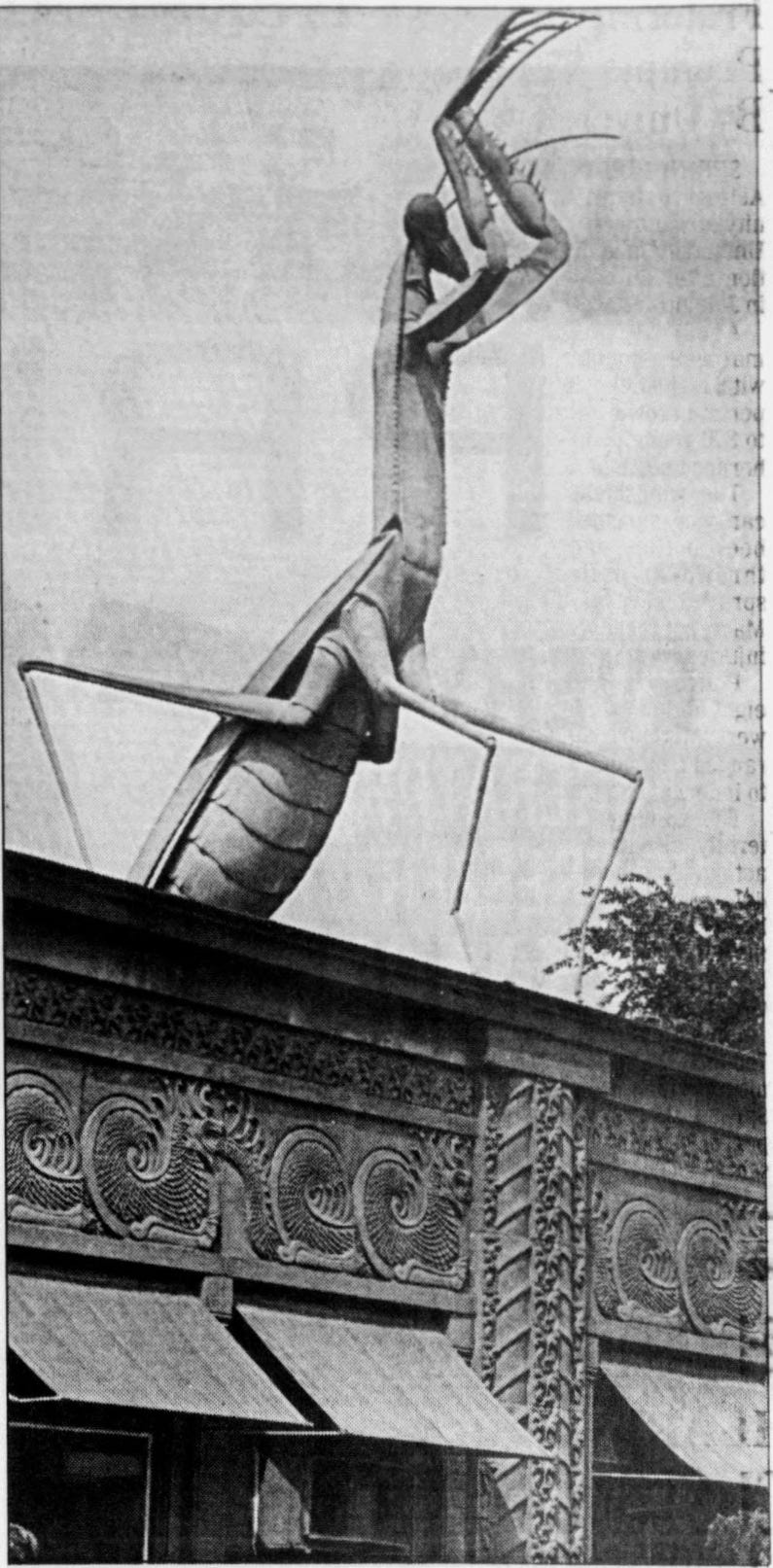
It’s unclear when Bob and Gail stopped working out of the Lafayette studio, but based on the interior, it appears they were likely the last occupants.
The Lafayette studio today
In a story that is all too familiar to St. Louisans, the current owners, SphereAxis Development Group, which also owns the (shuttered) Avyan Hotel next door, have done nothing to preserve the structure. In fact, given the advanced deterioration (the rear of the building is open to the elements, and part of the roof has collapsed), one could say the company is actively hurrying along its demise.
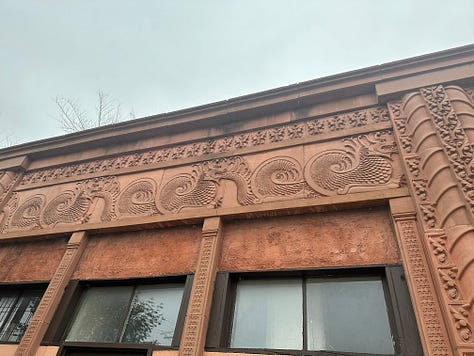
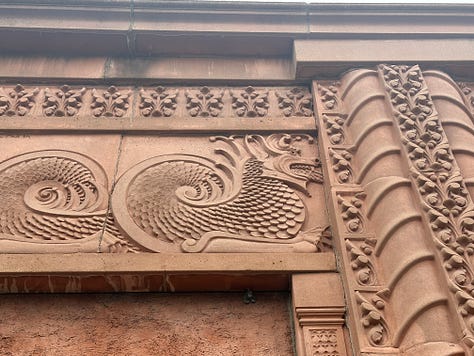

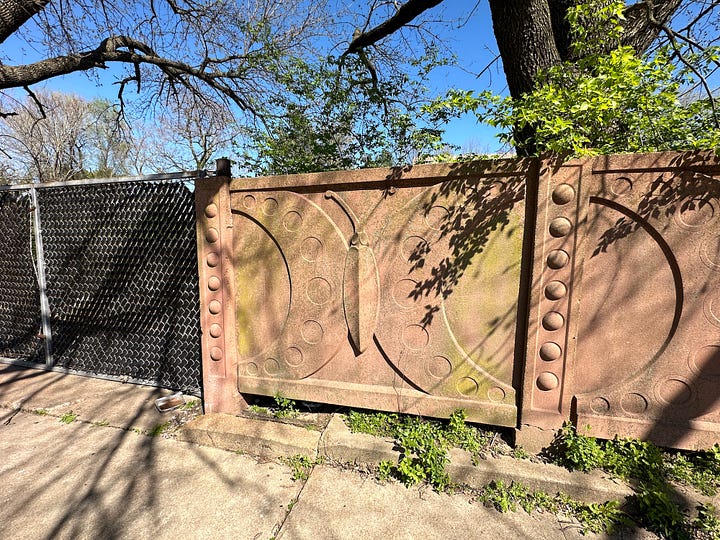
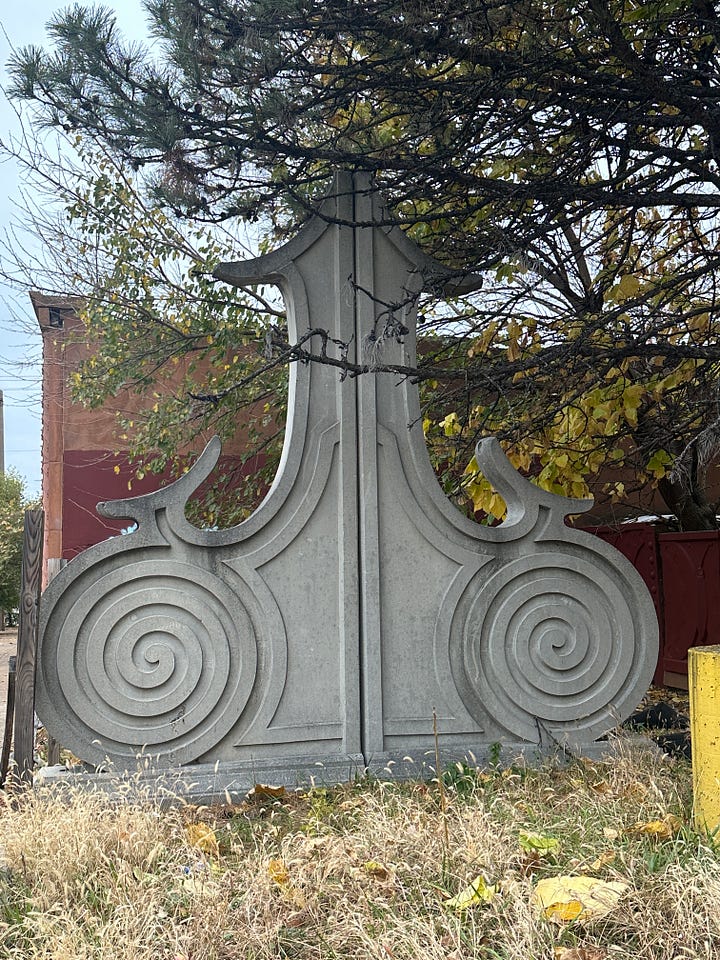
In early 2023, the owner filed a demolition permit with the city, but in late March, Meg Lousteau, the director of the city’s Cultural Resources Office, denied the permit.
According to the Post-Dispatch, Cassilly’s former studio sits in a preservation review district, meaning demolition permits can be denied if the building has architectural merit, uniqueness, or historic value, among other reasons, according to city ordinances.
Take action!
Although it was saved a year ago, the owner still wants to demolish it.
If you believe the building has historic or artistic merit and should be saved—or at the bare minimum, the fence, sculpture, and concrete dragon facade should be recovered and preserved—we need your help!
You can attend the Preservation Board meeting on February 26th, which will be held at 4 pm at 1520 Market St. Suite 2000, or attend the meeting via Zoom (click the link for more info). [Removed from Feb. 2024 agenda]. You can also submit comments up to an hour before the meeting to Bennett Anderson, Administrative Assistant I & Preservation Board Secretary, (314) 657-3865, andersonb@stlouis-mo.gov.
Be sure to mention the importance of this building and the extensive artwork on the facade and around the structure, which MUST BE SAVED.
If the Preservation Board and Meg Lousteau hear from enough of us, we may be able to save this piece of our history for generations to come.
Sources:
Bob Cassilly, Wikipedia
Jeannette Cooperman, Deconstructing Bob Cassilly, St. Louis Magazine, Jan. 25, 2012.
Julie Hail Flory, WashU Expert: St. Louis and the Mexican Revolution, The Source (Washington University), September 9, 2015.
Daniel Gonzales, 10 things you should know about Mexican history in St. Louis, St. Louis Magazine, Oct 12, 2017.
Steph Kukuljan, St. Louis preservation agency rebuffs attempt to demolish former Bob Cassilly studio, St. Louis Post-Dispatch, March 27, 2023.
Emily Langer, Bob Cassilly, sculptor and creator of quirky St. Louis museum and park, dies at 61, The Washington Post, October 4, 2011.
John M. McGuire, “Cassilly’s City,” St. Louis Post-Dispatch, 19 October 1997.
Judith Vandewater, “Architecture Can Be Art, Sculptor With Goals Claims”, St. Louis Post-Dispatch, 27 August 1984.
St. Louis Globe-Democrat, Sat, Sep 8, 1906
St. Louis Post-Dispatch, Sep 7, 1906
St. Louis Post-Dispatch Sun, Jul 12, 1908
Mexican Liberal Party, Wikipedia
Thomas Furlong, Find a Grave
Various advertisements and other mentions in St. Lous Post-Dispatch, St. Louis Globe-Democrat, and local German newspapers.

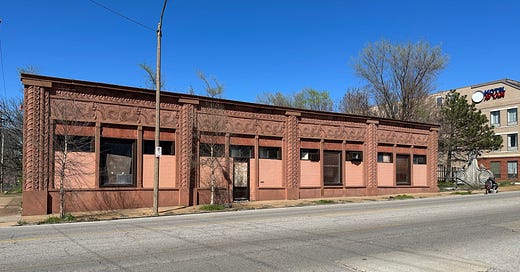



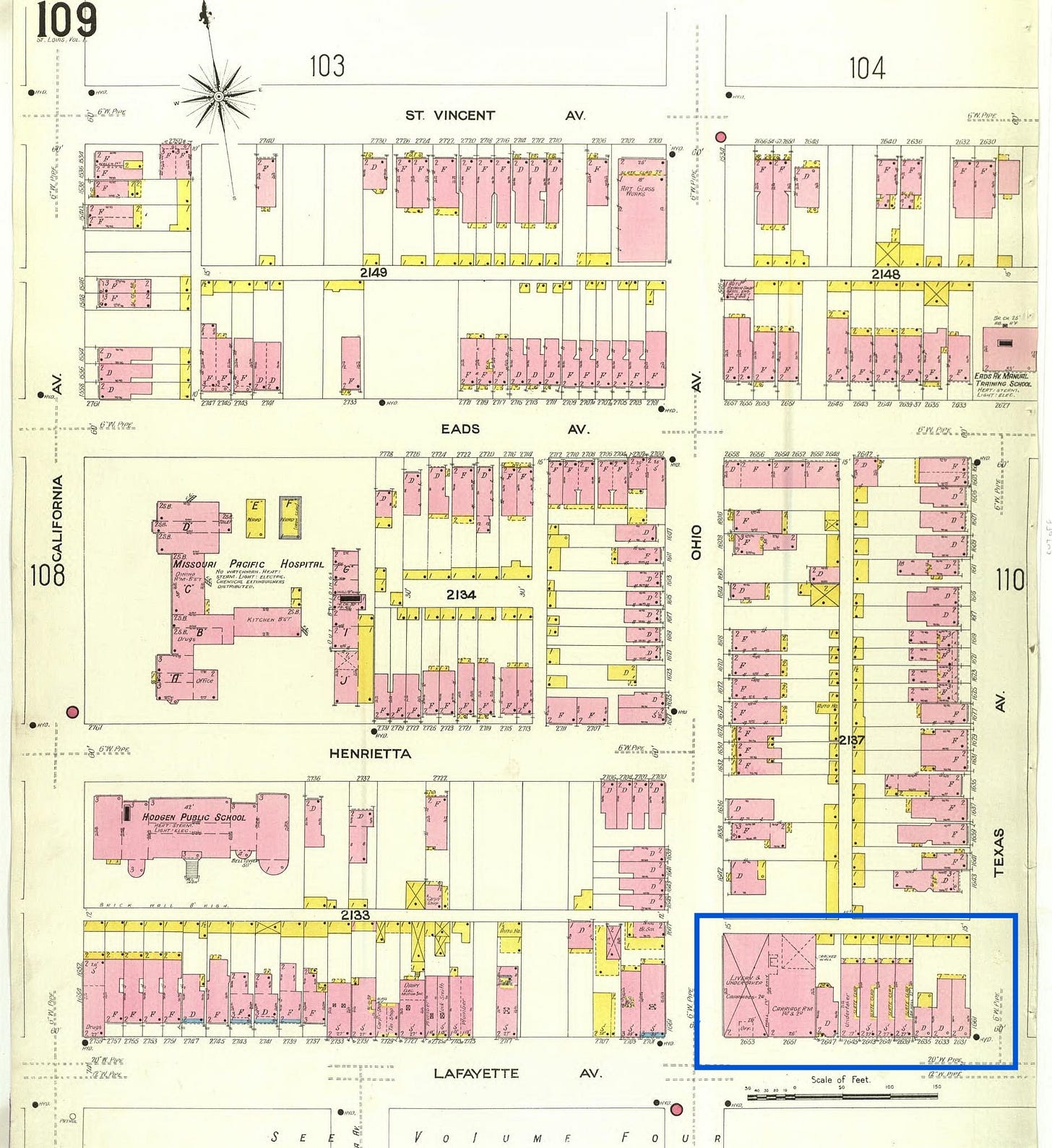



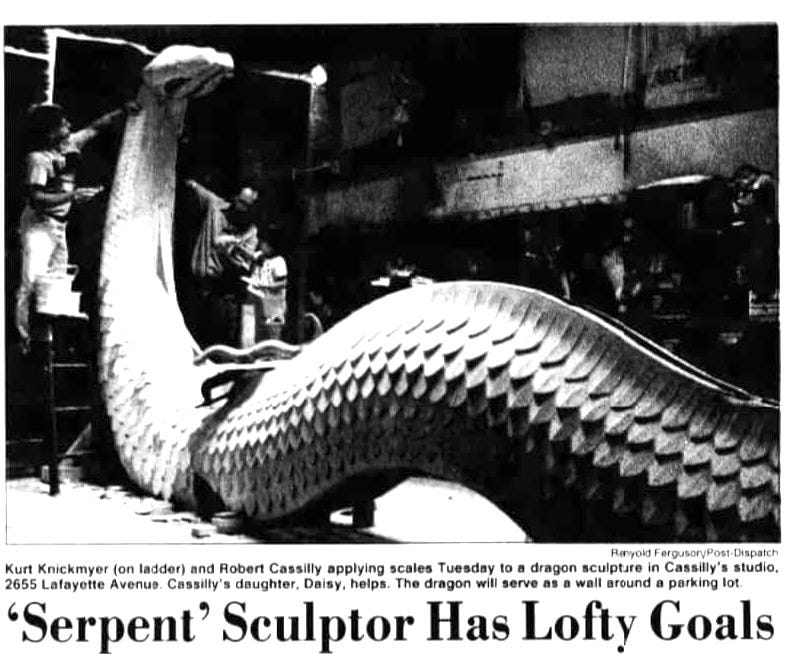
I wish there was the equivalent of you in Kansas City!. However, I am enjoying getting to know St. Louis better.
I’m so happy you’re doing this work. I am a structural engineering student who will move to St. Louis and work full time for a company that ends up working on many restoration and revitalization work of buildings in and around downtown St. Louis. I love the work and love historic buildings, and sadly too many times the ability to save or doom a beautiful building is in the hands of a developer or other agency :(